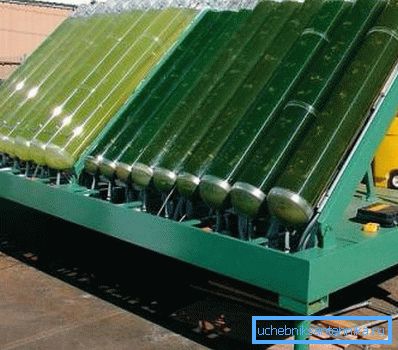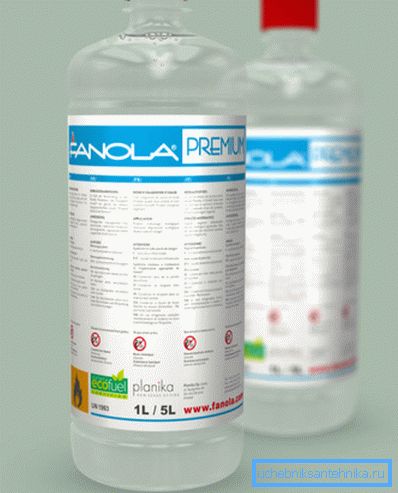Biofuels: how to effectively use agricultural waste
Sooner or later, non-renewable minerals, which are now used as fuel, will be completely exhausted. Therefore, various technologies using biofuels are being introduced around the world. It can replace traditional sources of energy in most areas of human activity, and to obtain it, it is enough to recycle agricultural waste in a special way.

General provisions
Basic concepts
Let's start by defining what biofuels are. The considered type of energy carrier is completely organic and, with appropriate equipment, can be used for heating residential buildings, fueling cars, powering industrial plants and so on.
Gaseous, liquid or solid biofuels can be produced from various agricultural plants (for example, from rapeseed), as well as from waste products of animals and humans (biofuel from manure). That is, the raw materials for its manufacture are, as a rule, those products that were previously sent to landfill.

In addition, the advantages of this type of energy can be attributed to their environmental friendliness. During combustion, much less harmful substances are released that affect the state of the environment. This favorably distinguishes biofuel boilers from heating equipment on diesel or gas, which are famous for their carcinogenic exhausts.
But biofuel has significant drawbacks:
- low heat capacity - liquid biofuel, burning in a heat exchanger, emits less heat than a similar amount of gasoline or diesel fuel;
- high cost of production - modern technologies do not yet allow the production of biofuels - liquid, solid or gaseous - on an industrial scale, because its price is somewhat higher than traditional energy carriers;
- Strong corrosive properties - vegetable oils and animal fats that are part of organic energy carriers, have a strong destructive effect on the mechanisms, which makes it difficult to use them in internal combustion engines and other similar systems.
Currently, obtaining biofuels with less aggressive properties and cheaper methods is one of the priority directions of scientific research of scientists all over the world. The enormous progress in this area makes it possible to say with confidence that it will be possible to get rid of most of the shortcomings of this type of energy in the near future.

Already widely used biofuels for greenhouses and other agricultural structures. The gas obtained from the processing of manure, or pellets are used to create a comfortable microclimate in which various crops grow. (See also the article Heating a greenhouse in winter: features.)
Note! Unlike natural oil and gas, which are produced only in the places of their occurrence, biofuel plants are not tied to deposits and can be installed anywhere in our country.
Biofuels generation
Even at the dawn of research related to the development of energy from agricultural waste, scientists expressed the fear that in the future, when biofuels become widespread, food problems may arise. This is possible if crops (maize, rape, maize) will be used not for their intended purpose, but for distillation into fuel.
To avoid this, scientists were looking for other biofuel energy sources. As a result of their research, second-generation biofuels and newer versions of it appeared.
These include substances derived not from the plants themselves, but from their waste: leaves, husks, rhizomes, and so on. A prominent representative of this type of coolant is biofuel from sawdust and manure - a gas consisting of methane and carbonic acid, which in everyday life is called "sewage".
It is absolutely identical in composition to natural fossil methane. After removing unnecessary elements from it, it can be used to produce ethanol for furnaces that heat certain structures.

The most innovative biofuel - the presentation of which took place not so long ago - is made from algae. These underwater plants can be grown in ponds that are not suitable for agricultural needs. Moreover, they can be cultivated in the so-called phytobioreactors.
As they develop, these organisms form molecular structures that resemble the structure of oil in their structure. Algae biofuel is the most promising development, however, its practical application is still very far away.
Note! The positive aspects of the use of algae can be attributed to the fact that in the course of their life they absorb carbon dioxide, reducing the amount of greenhouse gas in the atmosphere of our planet.

Biofuels Varieties
Biofuel energy sources, despite the deficiencies in the composition and production technology listed in the previous sections, are being used now. In some areas of human activity, they replace electricity. There are even entire biofuel-based boiler houses, with the help of which heating of residential buildings, commercial and industrial buildings is carried out.
The most widely used biofuels are:
- liquid;
- solid.
Let us consider each of them in more detail.
Liquid

One of the most suitable crops for the production of biofuel is rape.
The energy carrier is manufactured according to the following scheme:
- Collected rapeseed is subjected to fine cleaning, as a result of which garbage, soil and other foreign elements are removed from it;
- after that, the vegetable raw materials are crushed and squeezed to obtain the cake;
- then esterification of rapeseed oil occurs - volatile esters are extracted from this substance with the help of special acids and alcohols;
- at the end, the resulting biodiesel fuel is cleaned from unnecessary oil impurities.
Tip! The resulting substance is suitable for independent use, and can also be used as an additive for diesel, which allows to reduce harmful emissions into the atmosphere.

In addition, E-95 biofuel, which replaces traditional gasoline, is widespread. This type of energy carrier consists of ethyl alcohol with additives that reduce the corrosive effect on the metal and rubber parts of internal combustion engines installed in automobiles.
The advantages of biological gasoline are as follows:
- the cost of this type of fuel is lower than the traditional one;
- at its use the term of operation of oil and filtering elements increases;
- combustion of biofuels does not lead to the formation of a plaque on the spark plugs that prevents the passage of a spark;
- an internal combustion engine running on biobenzene does not emit harmful substances into the atmosphere;
- ethanol is inflamed worse and does not explode during traffic accidents;
- Organic gasoline detonates at a lower temperature, because the car's engine does not overheat in the warm season.

Despite the above advantages, liquid biofuel has several drawbacks that prevent its widespread introduction into economic activity:
- When using organic gasoline, internal combustion engines and other equipment quickly fail, because the substances that make up the natural energy carrier cause corrosion and ruin the rubber gaskets of the aggregates. Effective ways to combat this phenomenon has not yet been found.
- For the complete replacement of fossil fuels by biological it is necessary to significantly expand the area of agricultural land, which is currently impossible. In addition, the area of land suitable for growing plants is limited. The solution to the problem can serve as a third-generation fuel, work on the development of which has not yet been completed.
Solid
In addition to liquid biofuels, solid organic energy has gained deserved recognition among consumers around the world.
Their features are as follows:
- Made from various raw materials of biological origin. This may be organic waste of humans and animals, and parts of various plants.
- The essence of the technological process of production of solid biofuels is the effective use of various methods of cellulose splitting. Currently, many studies are being conducted, the purpose of which is to repeat the natural processes of splitting that occur in the digestive tract of living organisms.
- For the manufacture of solid organic fuel is used the so-called biological mass, which has a certain consistency and proportions. The finished product is obtained by removing moisture from the raw material and subsequent pressing.

Most often, solid energy is supplied in the following forms:
- briquettes;
- pellets;
- granules.
Independent production of biofuel
Necessary raw materials
Making your own biofuel is easy enough. This requires a large amount of manure and not very complex equipment, which can be ordered from specialized firms.
The costs that you incur in the initial phase will pay off over the next few years. A biofuel boiler house, which heats not only agrotechnical and cattle-breeding premises, but also a residential house, will significantly save on utility bills.
The most suitable from the energy point of view is horse manure. However, not every farm is engaged in the breeding of these animals, therefore in the plants for the production of biogas can be used waste of other animals.

The following organic mixtures can be used in the process:
- horse waste, mixed with peat or straw;
- manure mixed with stalks remaining after flax processing;
- manure mixed with organic human waste;
- cow dung mixed with horse in the ratio of 50/50;
- waste of cows mixed with sawdust;
- horse manure mixed with fallen leaves.
Before you make biogas, the raw material must be placed in a sealed bunker, where it will be subject to fermentation for a long period of time. After that, the excess liquid from the biological mixture is evaporated, and the resulting biomethane is used to meet various economic needs.
Homemade biofuel plant
The following instruction is about the technology of self-manufacturing unit, which can be used for the production of biofuel.
It is necessary to do the following:
- First of all, dig a pit of the size you need (depending on the amount of available raw materials).
- The walls of the pit should preferably be reinforced with concrete rings. This will prevent the soil from shedding. Joints should be carefully sealed with a concrete solution with the addition of plasticizers, preventing leakage, through which the produced biogas can evaporate.
- From above, the construction is hermetically sealed with a dome in which holes are made and pipelines installed that are necessary to supply gas to consumers.
- To increase the efficiency of the installation, heaters can be mounted in the tank in the form of coils operating on electricity.
Note! To use organic gas, it is necessary to modernize the heating equipment or to reconstruct the burners so that more oxygen enters the combustion chamber.

The process of obtaining biofuel is as follows:
- organic raw materials are put into the tank (its composition is discussed in detail in the previous section);
- it is also necessary to add water there, increasing the moisture content of organic matter up to 70%;
- after that, the heating element should be turned on and the manure temperature should be increased to 35 degrees;
- after the start of fermentation, the temperature of the mixture will rise even more, as a result of which the gas will start, which is used to power those or other consumers.
Organic fuel for fireplaces
In addition to biogas and organic gasoline, the use of which is not yet very widespread, you can already feel all the delights of using biofuels. This is Planica fanola fluid, which is specially designed for use in biofireplaces and can be used without fitting out the chimney and special ventilation.
Burning, this type of fuel does not form burning and smoke, and also does not emit harmful substances that can harm the human body.
One liter of liquid, ignited in a special tank installed in the fireplace for biofuels, can burn for at least 6 hours with the release of heat, whose power is equal to 3 kW of energy. This is almost two times more than the more common, but less environmentally friendly firewood.

Conclusion
Biofuel is one of the promising developments, all the benefits of which will be appreciated in the future. However, this does not prevent you from using self-made biofuel for a greenhouse or a bath. You can learn more about this from the video below.